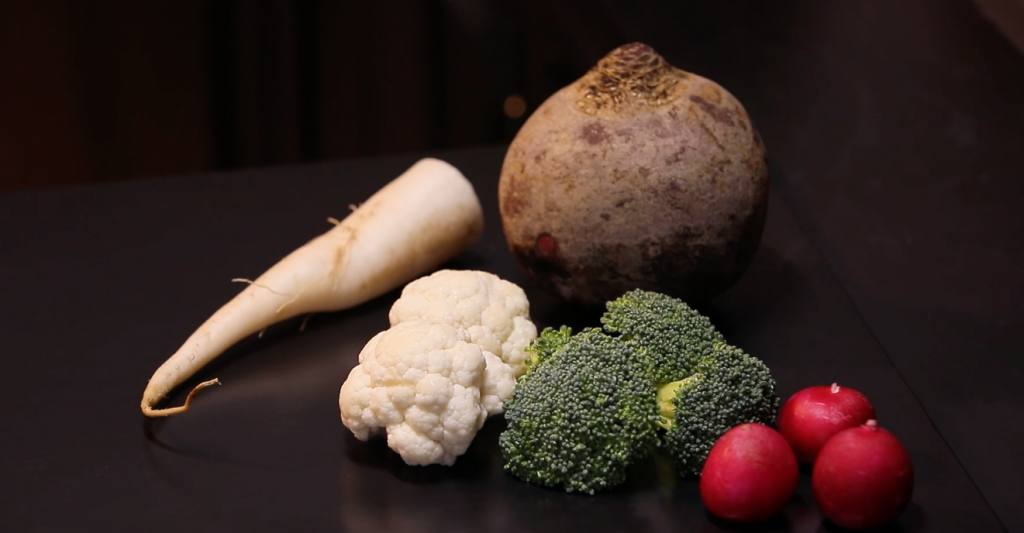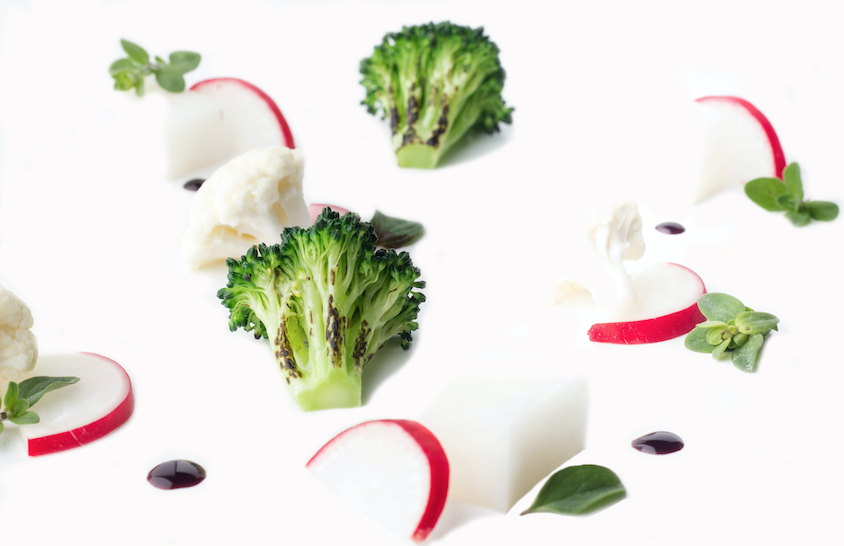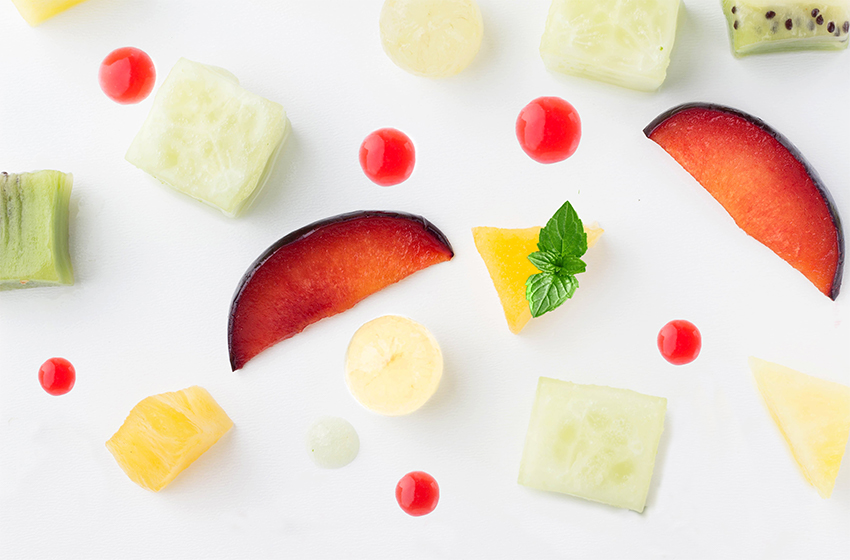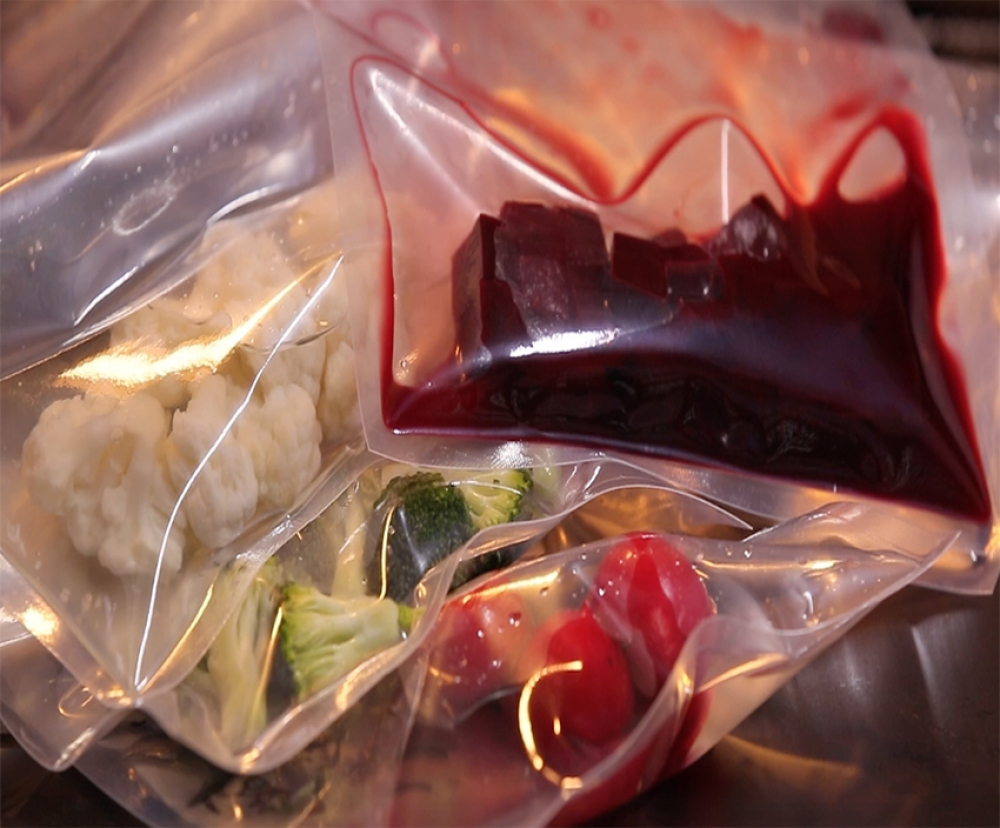organoleptic properties and taste. Fermented food is filled with “good bacteria” that work to boost our immune system, enhance our digestion and make sure our digestive system is healthy.Although we have always had these foods around us, just think of wine or beer, yeast, yogurt, cheese and even cold cuts, many of these have now become synonyms for culinary health and are increasingly used by chefs from all over the world as the main ingredients of their creations.
It is indeed quite common to see chefs experimenting with food acidity when cooking, using fermentation to try to take the best out of fruit and vegetables, all of their umami, in a totally natural way. So, the food you get is extremely healthy and tasty, filling the palate with its richness in flavour and diverse texture.
FERMENTATION
The fermentation process is very easy to achieve, even though there are strict rules to follow for the food to ferment properly and, most importantly, without posing any risks to health. It is actually quite usual when cooking that properly prepared food won’t start the fermentation process due to a number of reasons, such as temperature or sanitation of the tools used. This happens even though the natural process is often replaced by the use of chemical activators, such as yeasts. Remember, in some cases these may cause the formation of unwanted bacteria, which are harmful for human health.
But how does fermentation occur exactly? After properly cleaning and washing your food, you need to put it in containers and cover it with a liquid solution made from one-part acid and one-part sugar. To start the fermentation process, you need to let food rest in an environment at 20 °C for 10 days. This is when the bacteria that activate the process start to form. They feed on sugar and synthesize lactic acid, commonly known as Lactobacillus, which gives the typical acidic taste to fermented food but also brings all the benefits.

So, preparing fermented food takes time and certain hygienic and environmental conditions. If these conditions don’t exist, food may deteriorate before fermentation kicks in.
To avoid these problems and achieve natural and excellent quality results in a short time you can use waveco® and its innovative technology, which can help you make fermentation easy and safe. Thanks to the induced maturation© you can speed up the whole process by reducing the fermentation activation step and, more importantly, you extend the shelf life of food, so the consumer can use it for longer with higher food safety.
Below are some examples of recipes with vegetables and fruit fermented using waveco®.
FERMENTED RADISH
Take some washed and cut radishes and put them in a bag with water and vinegar and start the induced maturation© process. At the end of the cycle (about 20 minutes), the product you get has maintained its organoleptic properties, and is ready for fermentation which will activate in a few days. Unlike the traditional method, you don’t need to keep the food at room temperature first in order for the process to start, as you can store it directly in the fridge.

FERMENTED BEET
Wash the beet, peel, dice and put it in a bag with no water or marinade added, then prepare it using the induced maturation© process. In a short time (about 70 minutes) you can get tender food with very pleasant texture and taste. A similar result is impossible to achieve with traditional techniques in such a short time; normally, it would take several boiling hours with the skin on to increase tenderness.
The benefits of fermentation are huge: thanks to waveco® the process is faster and occurs safely, enabling you to use the beet even after just two days of fermentation.
FERMENTED PERSIMMON
Take a persimmon, peel it, cut it in four parts and put it in a pouch with alcohol and vinegar added. Start the induced maturation© process and after about 30 minutes the product you get has maintained all its organoleptic properties and is ready for fermentation, which will kick in after some days directly in the fridge.
SOAKED ONION WITH FERMENTED RASPBERRY
Take the raspberries and put them in a bag and add an alcoholic base, start the induced maturation© process for 60 minutes. Let the compound rest for about two days in the fridge in order to activate fermentation; then blend the compound and sieve it.
Take an onion, julienne it and put it in a bag while adding the liquid of the fermented raspberry and start the induced maturation© for 60 minutes.
At the end of the process the onions will have a bright colour because of a more even penetration of the fermented raspberry with no signs of oxidation (because no heat is used to prepare it) and will feel more tender and tasty on the palate.

FINAL CONSIDERATIONS
The fermentation activated using waveco® brings excellent quality: food is safe, its flavour is enhanced, and it can be consumed over a longer period of time thanks to an extended shelf life.
Shorter times should also be stressed: it normally takes many days for fermentation to activate in any type of preparation, while with waveco® you can be sure fermentation will start just a few days after storing the bag in the fridge.




